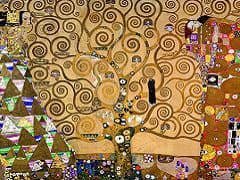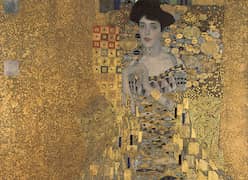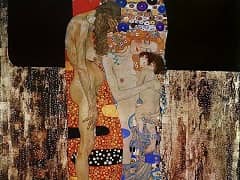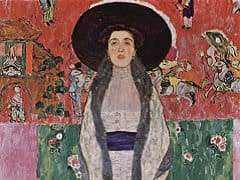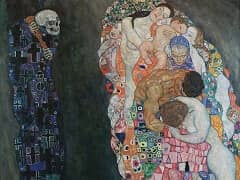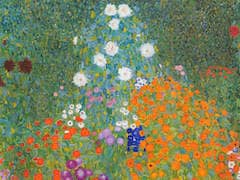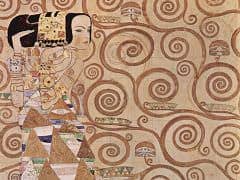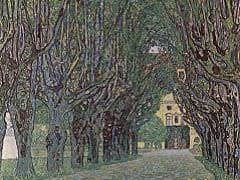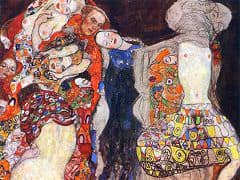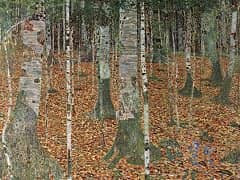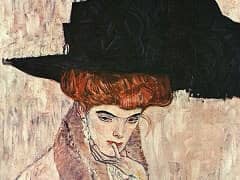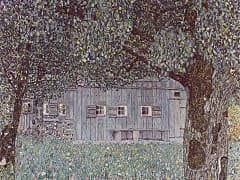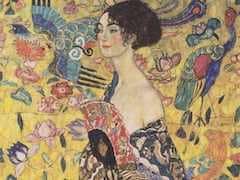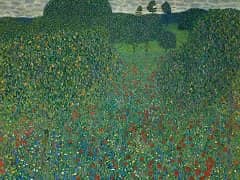Houses at Unterach on Attersee, 1916 by Gustav Klimt
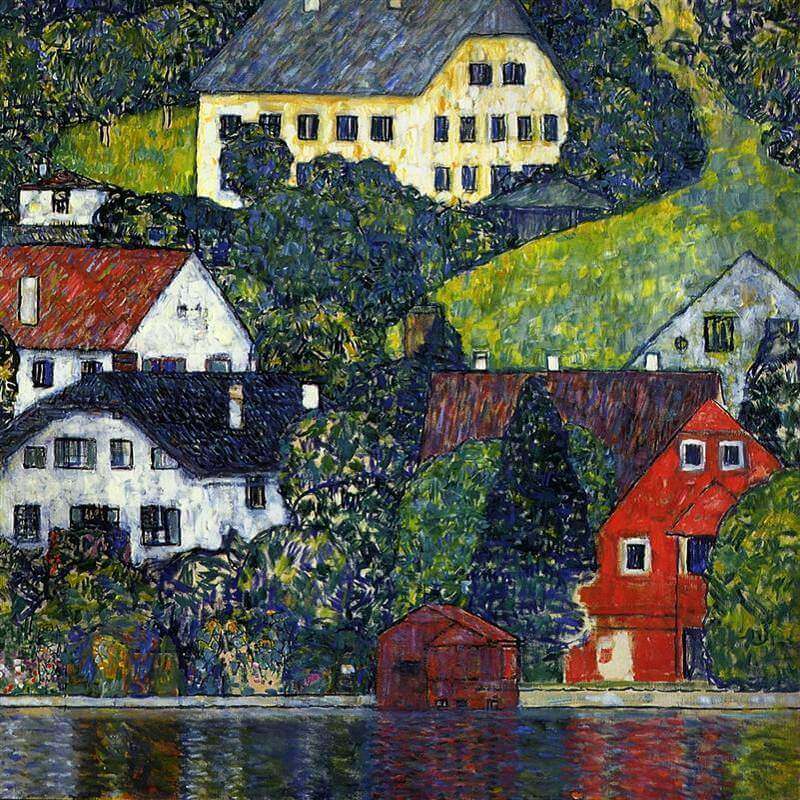
Klimt cruised his boat to the same spot at which Unterach on Attersee was painted, so the viewer can enjoy a tightly framed shot of the village. Once again this is a world devoid of people
and separated by art. There is no evidence of habitation, such as the curtains or flowers, attempted in Villa on Attersee (1914). Instead, the work's key
objective is the construction of shapes and forms within the confines of this tight frame. Schiele's more abstract, Cubist landscapes of this period arguably influenced this study of form and
pattern. Its geometric exploration has much in common with Fauvism by Matisse, with its child-like simplicity, than with the violent
characteristics and complexity of Schiele's Expressionism.
In Unterach on Attersee, Klimt's Pointillist style has given way to a flatter structure. The solidity of line, heavy black rimming, and loose, free brushstroke
rhythm simply defines and enhances the superb color blocks and their resulting schematic tensions. Consequently, the bright orange-red house front, to the right of the composition, sets up a
remarkable visual focal point, dynamically polarized by the contrasting green surrounds. This resulting energy forces the eye to travel in a zigzag motion, back and forth across the picture plane
to track the color's progression.


